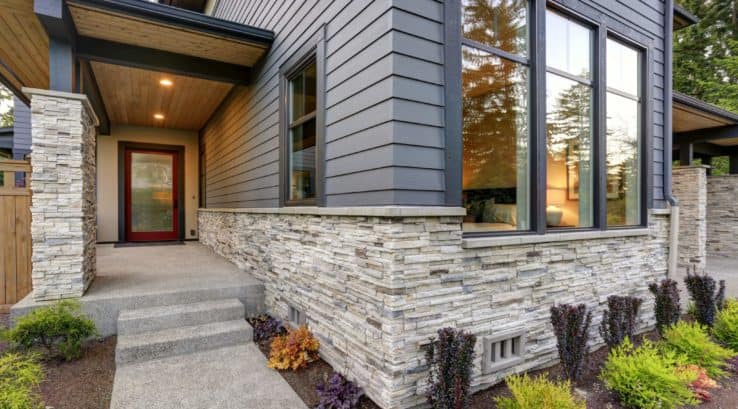Replacing wood siding with vinyl siding is a great way to freshen up your home. Vinyl siding can boost the curb appeal of your property and increase the overall value of your real estate investment.
Not only can you easily replace wood siding with vinyl, but this home improvement project can also save you time and money in the long run.
Vinyl vs. Wood Siding—What’s the Difference?
When it comes to finishing the exterior of your home, wood siding and vinyl siding are among the two most popular options.
While the classic look of wood siding is unmistakable, wood is constantly exposed to the elements. As with all-natural materials, wood can be impacted by wind, rain, snow, and UV rays, causing it to deteriorate over time. The average lifespan of wood siding ranges from 20 to 40 years, and that’s in ideal conditions with regular preventative maintenance. It’s not uncommon for wood siding to split, rot, warp, and leak in as little as five to 10 years following installation, especially in harsh climates.
Simply put, wood siding can look beautiful and last for decades, but only if you invest in a high-quality product and keep up a rigorous maintenance program. In fact, wood siding is widely considered to be the most expensive of all siding materials. This is because wood is costly to purchase, install, and maintain.
By comparison, vinyl siding is virtually maintenance-free. There’s no need to worry about repainting or staining, and today’s high-quality vinyl siding products are designed to remain stable in even the most extreme climate conditions. In fact, one of the most common reasons why homeowners replace wood siding with vinyl is to eliminate the costly, time-consuming maintenance that’s involved with wood siding.
Can you Replace Wood Siding with Vinyl?
Here at Thompson Creek, we’re often asked, “can you replace wood siding with vinyl”? Not only is the answer yes, but there are plenty of reasons why replacing wood siding with vinyl siding is the smart choice for savvy homeowners.
- Vinyl siding comes in a wide range of colors and styles.
Today’s vinyl siding comes in a wide range of colors, styles, and textures, including Dutch lap, hand-split, and cedar. - Vinyl is durable.
High-quality vinyl siding can last 40 or more years, and it requires minimal maintenance. - Vinyl rarely needs painting or staining.
While wood siding typically needs to be repainted every 3-7 years or restained every 3-4 years, vinyl siding almost never needs painting or staining. That can lead to significant cost savings over time. - Vinyl siding is environmentally friendly.
Unlike wood siding that’s difficult to recycle and requires the ongoing use of toxic stains and sealants, vinyl siding is widely considered to be the most environmentally friendly siding material. Scrap vinyl siding is 99% recyclable and can be remanufactured into new siding and other materials and products. - Vinyl siding is affordable.
Wood is no longer the cheapest option when it comes to siding. In fact, most wood siding products are significantly more costly to purchase and install than vinyl siding is. - Vinyl siding is safe.
When we replace wood siding with vinyl, we take the time to remove all the old wood siding and wrap the house with a moisture barrier. The vinyl siding we sell is backed with a non-flammable foam insulation that makes your home safer and more energy-efficient than wood siding can.
Contact Our Vinyl Siding Experts Today
If you’re considering replacing wood siding with vinyl on your home, contact us here at Thompson Creek. We’ll review your project, answer any questions you have about our products and services, and provide you with a free, no-obligation estimate.


